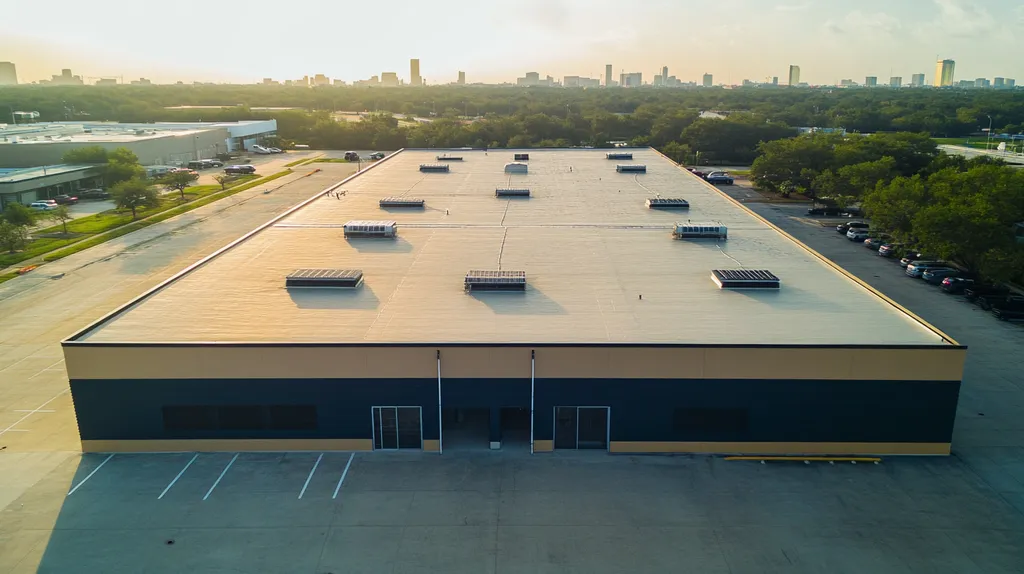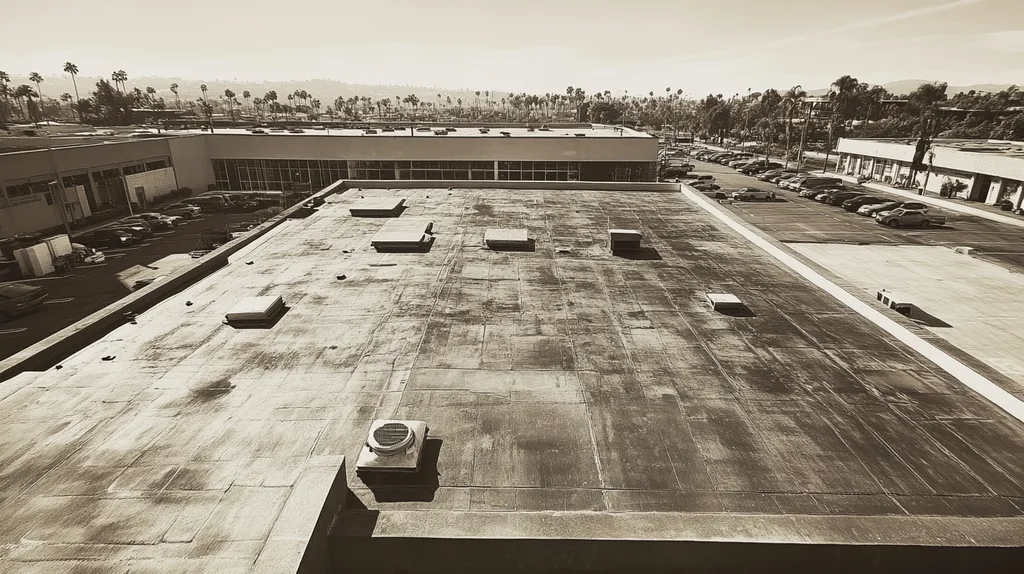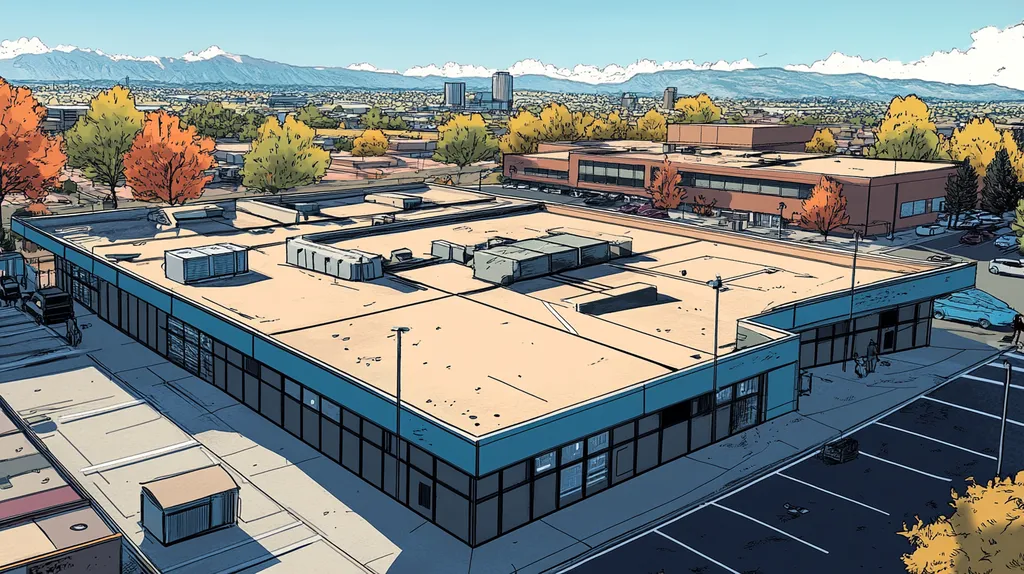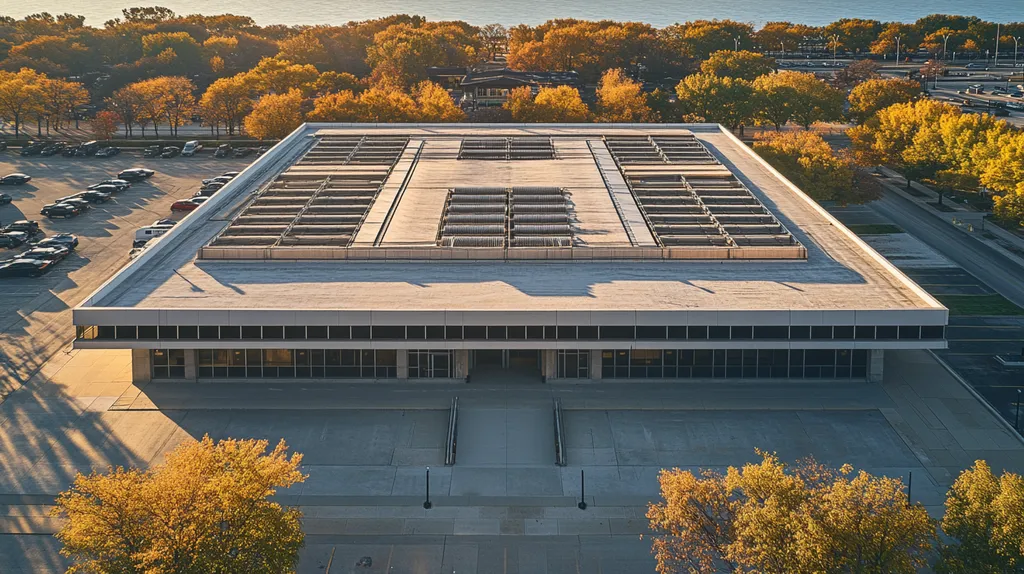Welcome to today’s Battle Royale featuring two roofing heavyweights: “Slate Roofing” in the east corner versus “Modified Bitumen” in the west!
Tonight’s showdown pits these contenders against each other across six punishing rounds designed to test every aspect of their performance for Historical Commercial Roof Upgrades.
At stake? Millions in potential costs, decades of building protection, and the critical performance demands of modern commercial and industrial facilities.
Our professional judging panel will evaluate each round on technical merit, real-world performance, and value delivery. After all six rounds, we’ll declare our ultimate champion.
Ladies and gentlemen, facility managers and building owners… it’s time to rumble!
ROUND 1: INITIAL COSTS & INSTALLATION
In today’s volatile construction market, choosing between roofing systems for historical commercial buildings has become increasingly complex. Material costs have risen by double digits annually, while skilled labor shortages create additional pressure on installation timelines. Property owners must carefully weigh these factors to protect both their building’s heritage and their bottom line.
Material Expenses
Material costs represent the foundation of any roofing project’s budget. Current market volatility has pushed prices higher across all roofing categories, making cost analysis more critical than ever.
Natural slate commands premium pricing, typically ranging from $15-25 per square foot for materials alone. This investment delivers unmatched durability and historical authenticity, with individual slate tiles lasting up to 100 years when properly maintained.
Modified bitumen presents a more economical option at $4-8 per square foot for materials. While offering reliable performance and modern weatherproofing capabilities, it lacks the century-plus lifespan of natural slate.
When considering total lifecycle costs including maintenance and replacement frequency, slate’s longevity offsets its higher initial investment.
ADVANTAGE: Slate Roofing
Installation Complexity
The complexity of installation directly impacts project success and total costs. Proper installation ensures the chosen system performs as intended while maintaining the building’s historical character.
Slate installation demands specialized expertise and equipment. Each tile must be individually placed and secured, requiring extensive knowledge of historical installation techniques and modern safety requirements.
Modified bitumen systems allow for more straightforward installation using contemporary methods. The rolled material can be applied efficiently by experienced commercial roofing teams without specialized historical expertise.
The significantly lower complexity and broader contractor availability of modified bitumen installation provides a clear operational advantage.
ADVANTAGE: Modified Bitumen
Project Timeline
Installation duration affects both direct costs and potential disruption to building operations. Longer timelines increase exposure to weather risks and extend the period of business impact.
Slate roofing installation typically requires 2-3 weeks for an average commercial project. The meticulous nature of slate placement, combined with weather sensitivity, extends the completion timeline.
Modified bitumen installation can often be completed in 3-5 days for similar square footage. The efficient roll-out application method and fewer weather restrictions enable faster project completion.
The substantial difference in installation speed gives modified bitumen a clear advantage for minimizing business disruption.
ADVANTAGE: Modified Bitumen
ROUND 1 WINNER: Modified Bitumen
ROUND 2: DURABILITY & LIFESPAN
When upgrading historical commercial roofs, durability and lifespan become critical factors that directly impact long-term preservation and financial planning. Recent industry data shows that premature roof failures can cost property owners up to five times more than initial installation costs through emergency repairs, structural damage, and business disruption.
Weather Resistance
In commercial settings, roofing materials must withstand decades of exposure to extreme weather conditions while maintaining their protective qualities. Understanding how materials perform over time helps property owners make informed decisions about long-term preservation.
Slate roofing exhibits exceptional resistance to freeze-thaw cycles, UV radiation, and heavy precipitation. Individual slate tiles can maintain their structural integrity for over 100 years, with many historical examples still performing after 150 years of service.
Modified bitumen offers good initial weather resistance but typically shows signs of degradation after 20-25 years. While modern polymers enhance its performance, the membrane remains vulnerable to thermal cycling and prolonged UV exposure.
ADVANTAGE: Slate Roofing
Structural Impact
The preservation and maintenance of historic roofs require careful consideration to maintain the building’s integrity. Proper material selection plays a crucial role in preserving both the structural stability and historical character of these important buildings. (source: University of Hawaii at Manoa)
Slate roofing’s weight requires robust structural support, but this added mass contributes to building stability. The individual tile system allows for natural building movement while maintaining watertight integrity.
Modified bitumen’s lighter weight reduces structural demands but offers less protection against external forces. The continuous membrane can develop stress points at building joints and may require more frequent maintenance to maintain effectiveness.
ADVANTAGE: Slate Roofing
Maintenance Requirements
Regular maintenance impacts both operational costs and the effective lifespan of roofing systems. Understanding these requirements helps property owners plan for long-term care and preservation.
Slate roofing typically requires minimal routine maintenance beyond periodic inspections. Individual damaged tiles can be replaced without compromising the entire system, making repairs cost-effective and localized.
Modified bitumen demands more frequent inspections and maintenance to prevent system failure. While repairs are generally straightforward, they often involve larger sections of the roof and may require specialized materials.
ADVANTAGE: Slate Roofing
ROUND 2 WINNER: Slate Roofing
ROUND 3: PERFORMANCE FACTORS
Performance factors in historical commercial roofing directly impact both preservation success and long-term operating costs. Recent industry data shows that improper material selection can reduce a roof’s functional lifespan by up to 70% while dramatically increasing maintenance expenses. For heritage buildings, these performance considerations become even more critical as they affect both structural integrity and historical authenticity.
Weather Resistance
Weather resistance represents the primary defense against environmental deterioration for historical structures. Professional assessment of weather resistance capabilities is essential for making informed decisions about historical roofing materials. (source: National Park Service)
Slate roofing demonstrates exceptional resistance to all forms of precipitation, from driving rain to heavy snow loads. Its natural density and overlapping installation pattern create multiple barriers against water infiltration while maintaining historical authenticity.
Modified bitumen provides good initial weather protection but can become compromised over time through UV exposure and thermal cycling. The membrane’s seamless installation offers immediate weather protection, though its modern appearance may detract from historical character.
ADVANTAGE: Slate Roofing
Thermal Efficiency
Thermal performance significantly impacts both energy costs and interior climate control. This becomes particularly crucial in historical buildings where maintaining stable environmental conditions helps preserve interior finishes and structural elements.
Slate roofing’s natural thermal mass helps regulate building temperatures throughout seasonal changes. The material’s density and installation method create natural ventilation paths that enhance overall thermal performance.
Modified bitumen typically requires additional insulation layers to achieve comparable thermal benefits. While modern materials can provide excellent R-values, the added complexity can impact historical authenticity.
ADVANTAGE: Slate Roofing
Impact Resistance
Impact resistance directly affects maintenance frequency and long-term durability. Historical buildings often face unique challenges from falling branches, maintenance foot traffic, and other physical impacts.
Slate roofing offers superior impact resistance due to its natural hardness and individual tile installation. Damaged pieces can be replaced individually without compromising the entire system’s integrity.
Modified bitumen provides adequate impact protection but can be more susceptible to punctures and tears. While repairs are generally straightforward, they often require larger section replacements that can affect system performance.
ADVANTAGE: Slate Roofing
ROUND 3 WINNER: Slate Roofing
ROUND 4: MAINTENANCE REQUIREMENTS
Maintenance decisions for historical commercial roofs carry significant long-term implications for both building preservation and operational costs. Industry data shows that improper maintenance can reduce a roof’s functional lifespan by up to 60% while increasing emergency repair expenses by 300%. Understanding the maintenance requirements of different roofing systems helps property owners make informed decisions that protect their historical assets.
Inspection Frequency
Slate roofing typically requires professional inspections only every 3-5 years when properly installed. These inspections focus primarily on flashing conditions and individual tile integrity, allowing for targeted maintenance planning.
The dense, natural composition of slate means it resists deterioration from normal weather exposure. Individual damaged tiles can be identified and replaced without compromising the surrounding roof sections.
Modified bitumen systems demand more frequent inspections, usually semi-annually, to identify potential seam failures and surface degradation. The membrane’s continuous nature means small issues can quickly escalate if not detected early.
The substantial difference in required inspection frequency and associated costs gives slate roofing a clear maintenance advantage.
ADVANTAGE: Slate Roofing
Repair Complexity
Professional advice will be needed to assess the various aspects of replacing or repairing a historic roof, as maintaining distinctive character becomes a crucial consideration. The National Park Service emphasizes that with some exceptions, the distinctive character of a historic building’s roof should not be changed. (source: National Park Service)
Slate roofing repairs require specialized expertise but remain highly targeted. Individual tiles can be replaced without disturbing surrounding areas, preserving the roof’s historical integrity.
Modified bitumen repairs often involve larger sections due to the membrane’s continuous nature. While repairs may be technically simpler, they can compromise historical authenticity and require more extensive disruption.
The ability to perform precise, historically accurate repairs gives slate roofing the advantage in this category.
ADVANTAGE: Slate Roofing
Long-term Care Requirements
Slate roofing’s natural composition eliminates the need for protective coatings or surface treatments. The material maintains its protective qualities through natural weathering processes, requiring minimal intervention.
Regular cleaning of gutters and removal of organic debris constitute the primary maintenance tasks for slate roofs. These simple procedures help prevent water damage while preserving the roof’s historical character.
Modified bitumen requires periodic recoating to maintain UV protection and water resistance. This ongoing maintenance adds both cost and complexity while potentially impacting the building’s historical appearance.
The minimal long-term care requirements of slate roofing provide a clear advantage for historical properties.
ADVANTAGE: Slate Roofing
ROUND 4 WINNER: Slate Roofing
ROUND 5: SUSTAINABILITY CREDENTIALS
Environmental regulations and market demands are reshaping commercial roofing decisions, with sustainability now a critical factor in material selection. Recent industry data shows that buildings account for 40% of global carbon emissions, making roofing choices increasingly scrutinized for their environmental impact. Property owners must balance preservation requirements with growing pressure to reduce their carbon footprint.
Environmental Impact
Modern sustainability standards require careful assessment of a roofing material’s complete environmental footprint. The National Park Service emphasizes that replacing historic roofing materials demands professional evaluation to maintain both integrity and sustainability. (source: National Park Service)
Slate roofing’s natural composition and minimal processing requirements result in significantly lower production emissions. The material’s durability eliminates the need for frequent replacements, reducing waste and resource consumption over time.
Modified bitumen’s petroleum-based composition and energy-intensive manufacturing process create a larger carbon footprint. While recyclable, the material’s shorter lifespan necessitates more frequent replacement cycles, generating additional environmental impact.
ADVANTAGE: Slate Roofing
Energy Efficiency
Thermal performance directly impacts building energy consumption and operating costs. Historical buildings particularly benefit from materials that enhance natural temperature regulation.
Slate roofing’s natural thermal mass provides excellent insulation properties, reducing heating and cooling demands. The material’s density and installation method create effective thermal barriers that maintain consistent interior temperatures.
Modified bitumen systems often require additional insulation layers to achieve comparable thermal performance. While modern coatings can improve efficiency, they add complexity and maintenance requirements that impact long-term sustainability.
ADVANTAGE: Slate Roofing
Lifecycle Assessment
Total lifecycle impact encompasses material production, installation, maintenance, and eventual disposal. Understanding these factors helps property owners make environmentally responsible decisions.
Slate roofing’s century-plus lifespan minimizes replacement needs and associated resource consumption. The material’s natural composition allows for simple recycling or repurposing at end-of-life.
Modified bitumen typically requires replacement every 20-25 years, generating significant waste and demanding new resources. While recycling programs exist, the complex material composition complicates end-of-life processing.
ADVANTAGE: Slate Roofing
ROUND 5 WINNER: Slate Roofing
ROUND 6: SPECIALIZED APPLICATIONS
Specialized roofing applications in historical commercial buildings present unique challenges that directly impact preservation success and financial stability. Recent industry data shows that 40% of premature roof failures in heritage buildings stem from improper material selection for specialized conditions. Property owners must carefully evaluate how different roofing systems perform under specific architectural requirements, climate conditions, and preservation standards.
Architectural Integration
The National Park Service emphasizes that replacing historic roofing materials requires professional assessment to maintain both structural integrity and architectural authenticity. This evaluation becomes particularly crucial when dealing with unique architectural features common in heritage buildings. (source: National Park Service)
Slate roofing offers superior flexibility for integration with complex architectural elements. Individual tiles can be cut and shaped to accommodate unique features while maintaining historical accuracy and water-shedding capabilities.
Modified bitumen presents significant challenges when conforming to elaborate architectural details. The membrane’s continuous nature often requires compromising historical features or creating potential weak points at complex transitions.
ADVANTAGE: Slate Roofing
Climate-Specific Performance
Regional climate variations create distinct challenges for historical commercial roofing systems. Performance requirements vary dramatically between coastal, mountain, and urban environments.
Slate roofing maintains consistent performance across diverse climate zones. Its natural composition resists degradation from salt spray in coastal areas while handling extreme temperature fluctuations in mountain regions.
Modified bitumen’s performance can vary significantly based on climate exposure. Coastal salt exposure accelerates membrane degradation, while extreme temperature cycling can compromise seam integrity.
ADVANTAGE: Slate Roofing
Heritage Preservation Requirements
Historical preservation standards often mandate specific approaches to roofing materials and installation methods. These requirements protect architectural heritage while ensuring long-term building stability.
Slate roofing typically meets or exceeds preservation requirements without modification. Its traditional appearance and installation methods align naturally with heritage preservation goals.
Modified bitumen frequently requires special accommodations or variances to meet preservation standards. Its modern appearance and installation methods can conflict with historical authenticity requirements.
ADVANTAGE: Slate Roofing
ROUND 6 WINNER: Slate Roofing
AND THE WINNER IS…
After six grueling rounds of technical evaluation, we have our verdict, and it’s a decisive victory! With an impressive 5-1 record, SLATE ROOFING claims the championship belt in this historic showdown!
Slate dominated the competition with knockout performances in durability, performance, maintenance, sustainability, and specialized applications. Its century-plus lifespan, superior weather resistance, and impeccable preservation credentials proved unbeatable in the heritage arena.
But don’t count Modified Bitumen out entirely, folks! This modern contender showed its strength in Round 1, proving itself a worthy option where faster installation and lower initial costs are paramount. When project timelines are tight and budgets are constrained, Modified Bitumen can still deliver a solid performance.
Remember, champions: Every building brings its own unique challenges to the ring. Local climate conditions, structural capabilities, and specific preservation requirements can all impact roofing performance. While this analysis provides general guidance, property owners should always consult qualified professionals who can evaluate their specific situation before making final decisions.
In the high-stakes world of historical commercial roofing, there’s no substitute for matching your building’s unique requirements with the right material’s strengths. Choose wisely, because when it comes to protecting our architectural heritage, there are no rematch opportunities!
FREQUENTLY ASKED QUESTIONS
Q. What are the costs associated with commercial roof installation?
A. Installation costs vary widely, with slate typically costing $15-25 per square foot and modified bitumen ranging from $4-8 per square foot. When considering your budget, also factor in the long-term costs related to maintenance and replacements.
Q. How does durability affect historical commercial roofs?
A. Durability is vital as it impacts the lifespan and preservation of your roof. Slate has a lifespan of over 100 years, while modified bitumen typically lasts only 20-25 years, making longevity and maintenance a key consideration.
Q. What performance factors should I consider for my industrial roof?
A. Performance factors include weather resistance, thermal efficiency, and impact durability. Slate excels in these areas, offering superior longevity and better overall protection compared to modified bitumen.
Q. How often should I inspect a historical commercial roof?
A. Slate roofs typically require inspections every 3-5 years, while modified bitumen should be checked semi-annually. Regular inspections help identify and address issues early, protecting your investment.
Q. What sustainability aspects should I evaluate for a commercial roof?
A. Consider the environmental impact, energy efficiency, and lifecycle assessment of roofing materials. Slate offers lower production emissions and excellent thermal performance, making it a more sustainable choice long-term.
Q. How does roofing selection affect heritage preservation?
A. Proper roofing material selection is crucial for maintaining both structural integrity and historical authenticity. Slate often meets preservation standards without modification, while modified bitumen can conflict with historical aesthetics.
Q. Which roofing system is best for specialized applications?
A. Slate roofing is preferred due to its flexibility and ability to integrate with unique architectural features. Modified bitumen may struggle to conform to complex designs without compromising historical character.











